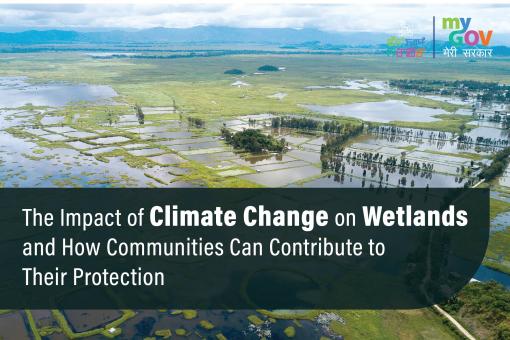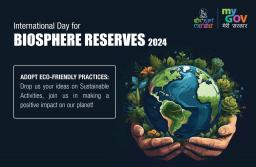Open Forum
- Department of Art & Culture
- Creative Corner
- Department of Agriculture
- Department of Education
- Department of Fisheries
- Department of Horticulture & Soil Conservation
- Department of Information Technology
- Department of MAHUD
- Department of Science & Technology
- Department of Sericulture
- Department of Tourism
- Department of Trade Commerce & Industries
- Department Of Transport
- Directorate of Health Services
- Finance Department
- Forest Department, Government of Manipur
- General Administration Department
- Imphal Municipal Corporation
- Manipur Fire Service
- Manipur Police Housing Corporation Limited (MPHC Ltd.)
- Open Forum
- Social Welfare Department
The Impact of Climate Change on Wetlands and How Communities Can Contribute to Their Protection
Start Date: 02-02-2025
End Date: 09-05-2025
As global temperatures rise and weather patterns change, wetlands are facing unprecedented challenges. We invite all community members, environmentalists, and policy advocates to ...
Hide details













BrahmDevYadav 10 months 1 week ago
What are the characteristics of the wetland ecosystem?
Wetlands are transition zones. They are neither totally dry land nor totally underwater, they have characteristics of both. The saturation of wetland soil determines the vegetation that surrounds it. Plants that live in wetlands are uniquely adapted to their watery soil.
BrahmDevYadav 10 months 1 week ago
Which two sources are carbon sinks?
Oceans and forests are the two largest natural carbon sinks, which extract carbon from the atmosphere through biological processes. In the ocean, plankton, coral, fish, algae, and photosynthetic bacteria capture CO2 from the water.
BrahmDevYadav 10 months 1 week ago
What are the seven causes of climate change?
The following causes of Climate Change are as under:-
1. Generating power. Generating electricity and heat by burning fossil fuels causes a large
chunk of global emissions.
2. Manufacturing goods.
3. Cutting down forests.
4. Using transportation.
5. Producing food.
6. Powering buildings.
7. Consuming too much.
BrahmDevYadav 10 months 1 week ago
What are the four main types of climate change mitigation?
There are four types of measures:-
1. Sustainable energy and sustainable transport.
2. Energy conservation including efficient energy use.
3. Sustainable agriculture and green industrial policy.
4. Enhancing carbon sinks and carbon dioxide removalincluding carbon sequestration.
BrahmDevYadav 10 months 1 week ago
What is Wetlands International goal?
Wetlands International is a global not-for-profit organisation dedicated to the conservation and restoration of wetlands. Our vision is a world where wetlands are treasured and nurtured for their beauty, the life they support and the resources they provide.
BrahmDevYadav 10 months 1 week ago
How do wetlands filter water?
Wetlands purify our water by removing sediments and other pollutants including chemicals. Wetlands also filter and process excess nutrients that may runoff from agricultural and development sites. Wetlands have been called “the kidneys of our watersheds.”
BrahmDevYadav 10 months 1 week ago
How do wetlands store carbon?
All wetlands sequester carbon from the atmosphere through plant photosynthesis and by acting as sediment traps for runoff. Carbon is held in the living vegetation as well as in litter, peats, organic soils and sediments that have built up in some instances, over thousands of years.
BrahmDevYadav 10 months 1 week ago
What are the functions of the wetlands?
Wetlands are considered valuable because they clean the water, recharge water supplies, reduce flood risks and provide fish and wildlife habitat. In addition, wetlands provide recreational opportunities, aesthetic benefits, sites for research and education and commercial fishery benefits.
BrahmDevYadav 10 months 1 week ago
How to protect wetlands?
Change your consumption habits Saving water, reducing harmful waste and encouraging sustainable farming and fishing can all have a positive effect on wetlands. Buy sustainably raised or caught seafood, organic produce and meat. Use reusable bags at the grocery store. Take shorter showers.
BrahmDevYadav 10 months 1 week ago
Are mangroves wetlands?
Mangrove swamps are coastal wetlands found in tropical and subtropical regions. They are characterized by halophytic (salt loving) trees, shrubs and other plants growing in brackish to saline tidal waters.